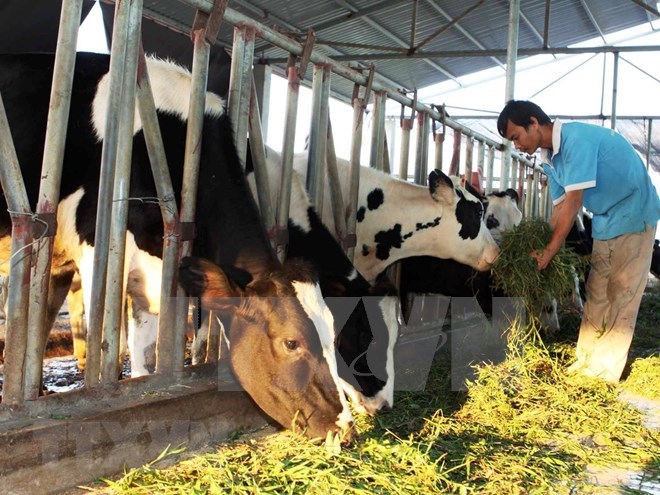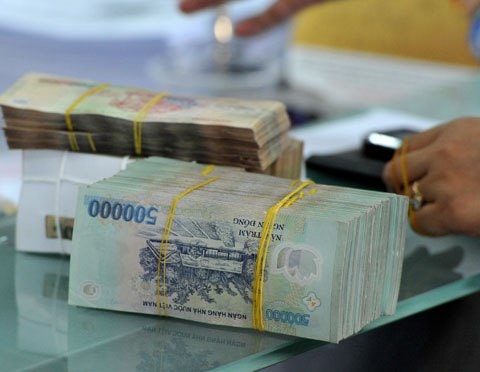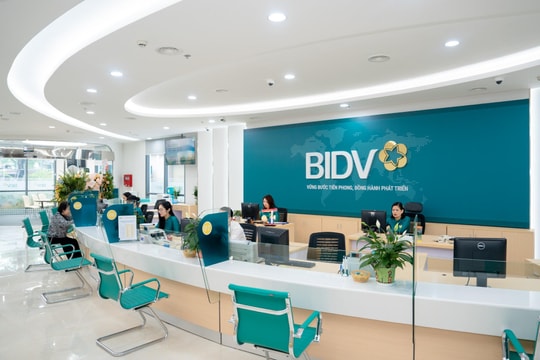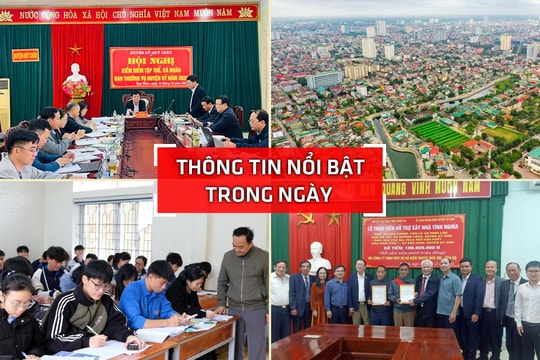'Borrow 100 dong need 500 dong collateral?'
"In other countries, livestock loans are given for 30 years, but in Vietnam, loans are only given for 3 years and sometimes even 7 years, so it is impossible to have enough money to pay back the bank. We hope that banks will create conditions to help businesses access suitable capital sources. Mortgages must have red books, and land values are very cheap. Factories and machinery worth several billion VND, but the policy does not allow mortgages of factories and machinery, so we hope there will be solutions to access capital more easily."
That is the opinion of Mr. Pham Dinh Thang, an excellent farmer of Ham Yen district, Tuyen Quang province, at the workshop "Bank credit promotes restructuring of the agricultural sector" recently organized by the Central Committee of the Vietnam Farmers' Union in coordination with the State Bank.
» Low loan interest rates: Promoting production and business at the end of the year
 |
| Illustrative photo. (Photo: Vu Sinh/VNA) |
Unblocking capital for agriculture and rural development
Speaking at the workshop, Deputy Governor of the State Bank of Vietnam Dao Minh Tu said that as of September 30, credit investment in agriculture and rural areas had reached over VND925,000 billion (excluding outstanding loans of the Vietnam Bank for Social Policies and the Vietnam Development Bank), an increase of 9.6% compared to the end of 2015 and 13.43% compared to the same period.
The average credit growth in the agricultural and rural sector in the 2010-2015 period reached 17.4%, higher than the average credit growth rate in general. The proportion of loans to the agricultural and rural sector accounted for over 18%, equivalent to the sector's contribution to the GDP of the economy.
According to the Deputy Governor, lending interest rates for the agricultural and rural sectors have also decreased sharply, generally from 6-8%/year, with short-term lending interest rates controlled at below 7%/year. For policy beneficiaries, incentives and many special credit programs, the interest rate is only about 5-6%/year.
Mr. Lai Xuan Mon, member of the Party Central Committee and Chairman of the Central Committee of the Vietnam Farmers' Association, emphasized that recently, the Government has had many measures to direct the banking sector to prioritize capital for agriculture and in fact, credit policies have had a strong impact in unlocking capital sources for agricultural and rural development.
However, the reality shows that credit policy has not yet met the needs of agricultural and rural development. The scale of capital for lending to the agricultural and rural sectors is still small and low compared to the demand.
According to Mr. Mon, to restructure the agricultural sector, a large amount of capital is needed, in which credit capital plays a particularly important role.
"1 dong of capital needs 200 dong of guarantee"
Mr. Pham Dinh Thang, an excellent farmer in Ham Yen district, Tuyen Quang province, represented about 400 households growing, processing and caring for arrowroot plants in the province to share that his business operates under a cooperative economic mechanism specializing in processing, producing and finding outlets for its products.
In the past, Mr. Thang's business has received loans from local banks, but his business is in dire need of long-term capital.
“Investing in farmers is not risky because this crop cannot be paid back. Next crop, we will have a plan to help farmers pay back the capital to the bank. Currently, we have 2,000 workers and need capital to buy several billion sets of cassava for input in vermicelli production, but after the crop season, we no longer need capital. We hope that banks will create conditions to help businesses like us to access appropriate capital sources. Mortgages must have red books, and land values are very cheap. Factories and machinery worth several billion, but the policy does not allow mortgaging factories and machinery, so we hope there will be solutions to access capital more easily,” Mr. Thang suggested.
 |
Mr. Pham Dinh Thang, an excellent farmer in Ham Yen district, Tuyen Quang province. |
Ms. Trinh Thi My, in Phu Luong commune, Que Vo district, Bac Ninh province, said that her family's main business is animal husbandry and has accessed capital from Agribank nearly 10 years ago.
However, Ms. My's family currently wants to expand the scale of closed-loop farming and will increase the herd to 600 sows and 10,000 commercial pigs and hopes to have the bank accept the farm as collateral for a loan.
Ms. My said: “Currently, Decree 55 has a mechanism for unsecured loans, but we have not been able to access unsecured capital. As for mortgages, we had to use 6 red books with an area of 4,200 square meters and have a solid house to be able to borrow capital.”
Ms. My also suggested that the Farmers' Association should do a good job of advising on domestic food output, and should have strict sanctions against banned substances in livestock farming. Otherwise, it will greatly affect livestock prices. There should be a policy of granting red books to livestock farms located far from residential areas for a period of 50 years so that they can be used as collateral for loans.
Also at the conference, Mr. Le Quang Thanh, General Director of Thai Duong Company, said that his company has 2 animal feed factories with 8,000 sows, 7 breeding farms, and links with 20 stations in the provinces to produce and supply breeds.
Mr. Thanh shared that in other countries, livestock loans are given for 30 years, while in Vietnam, loans are only given for 3 years and sometimes for 7 years, so it is impossible to have enough money to repay the bank. The legal procedures for borrowing capital are too many, for example, the property must have a secured transaction. To prove the collateral, there are too many documents. To have 1 dong of capital, you need 200 dong of secured capital. To borrow 100 dong of working capital, you need 500 dong of secured capital. The policy mechanism to make collateral for livestock farmers to borrow capital needs to be more open so that businesses have enough capital for production and business activities.
 |
| Illustration |
“Our ambition is to build 15 seed production projects, but it is very difficult to borrow capital. I would like to recommend that the State Bank and the Government allocate resources for businesses to invest in technology; consider reducing interest rates; the current lending interest rate for businesses is still around 9%, which is very high. Only then can agriculture develop,” Mr. Thanh suggested.
In his closing speech at the workshop, Deputy Governor of the State Bank of Vietnam Dao Minh Tu emphasized that in the coming time, the credit structure will be strongly transformed to suit the agricultural structure, the capital structure, and the planning of each region, each area, and each locality. Specifically, previously, there were 3 preferential packages for loans for crop and food cultivation, and now we will consider whether to set up more.
In addition, credit capital will be concentrated with appropriate preferential policies and mechanisms, not spread widely in all areas, but will focus on areas such as export, application of high technology, science and technology to increase the added value of products.
“Especially lending to projects, businesses, and households participating in the value chain of products from production, processing, and export. A value chain can have many participants, but the important thing is the benefits of the participants. When there are benefits, people will participate. Banks are like strings that create benefits for the participants in this value chain,” the Deputy Governor emphasized./.
According to Thuy Ha/vietnamplus






